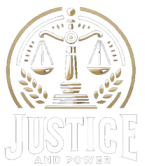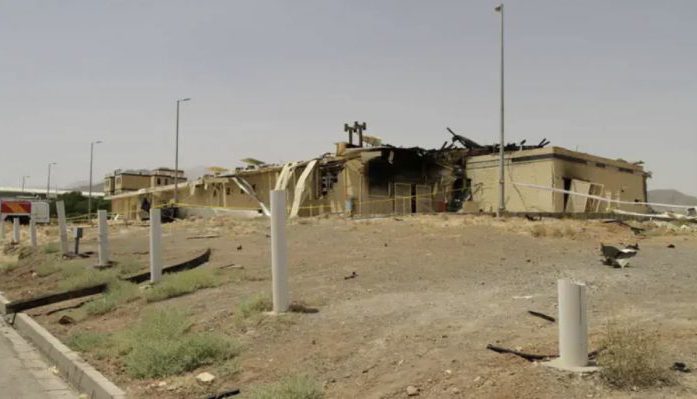Though we are once again sovereign in our ancestral homeland for the first time since the days of Queen Shlom-Zion, the murderers still stalk us. And though tragedy strikes, we are in an incomparably better situation than we have been at any time since Queen Shlom-Zion.
I began writing this D’var Torah in mid-week, looking forward to the semi-Festival of Lag Ba’Omer. And I began by noting that Parashat Emor opens with instructions for the Kohanim (Priests): “Hashem said to Moshe: Say to the Kohanim, sons of Aaron…” (Leviticus 21:1), and then proceeds with dozens of laws which the Kohanim are enjoined to observe.
Among these, the Torah defines several physical blemishes which disqualify a Kohen from performing the rituals (Leviticus 21:16-21): a Kohen who is blind, lame, whose nose has no bridge, whose testicles have been crushed, who has a broken limb, and so on.
The Mishna (Bechorot Chapter 6) deduces that these are headings of categories of disqualifications, and therefore details a long list of other blemishes which disqualify the Kohen from ministering.
These laws were in force from the time that G-d gave them in the Sinai Desert in the second year after the Exodus, throughout the time that the Mishkan functioned in the Sinai Desert and later in the Land of Israel, then in the golden age of the First Holy Temple in Jerusalem, and finally in the Second Holy Temple – almost a millennium-and-a-half all told.
We now jump ahead to some of the darker days in Jewish history:
The mid-Second Temple era.
The Hasmonean Dynasty, having defeated the Seleucid Empire and kicking them out of Israel, having re-established Jewish independence in the Land of Israel, had earned the uncritical adulation of an appreciative population.
(Hardly unique: consider the nigh-hero worship for soldiers in Israel immediately after the War of Independence and the Six Day War, or in Britain and the USA immediately after the Second World War.)
The glory of the Maccabees was such that even during the war, while the conflict was yet raging, Yehudah the Maccabee, the son of Matityahu who had started the revolt, was universally accepted as temporal ruler of Israel as well as Kohen Gadol (High Priest).
This continued for a few generations; eventually Yehudah Aristobulus I, Matityahu’s great-grandson and the fifth Kohen Gadol of the dynasty (104-103 B.C.E.), declared himself King of Judea.
This was highly controversial, because the kingship – and certainly the hereditary kingship – of Israel is the exclusive prerogative of the Tribe of Judah. The Hasmoneans’ usurpation of the Jewish throne was, however, but one symptom of their growing corruption and estrangement from Torah.
And though the Rabbis of the generation tried to protest against the growing Hasmonean corruption, the enthusiasm of the masses for this dynasty which had liberated the nation from Seleucid occupation was all but irresistible. Thus began a confrontation between the combined kingship-priesthood and the Sanhedrin (the Rabbinic authorities), a conflict which was never really resolved for as long as the Hasmonean dynasty lasted.
King Yehudah Aristobulus I imprisoned his youngest brother Alexander Yannai (Jannæus), whom he considered sufficiently popular to threaten his own position. Under Aristobulus’ reign, Hasmonean forces conquered and annexed the Galilee – boosting the popularity of the monarchy even more.
So though this was wonderful for nationalist morale, it was a disaster for Torah.
Aristobulus ruled for just one year: he died in hideous pain of an unexplained disease, just days after his brother Antigonus was murdered by Aristobulus’ bodyguards, after his wife Shlom-Zion (Salome Alexander) had convinced Aristobulus that Antigonus was plotting against him.
With Aristobulus dead, Queen Shlom-Zion released Alexander Yannai, who then became the second king of the Hasmonean dynasty, reigning from 103-76 B.C.E. He married his dead brother’s widow, Queen Shlom-Zion, and with her had two sons, Hyrcanus and Aristobulus.
These Greek names were indicative of the thorough Hellenization of the Hasmonean Dynasty.
Aristobulus, the younger brother, became Kohen Gadol in 66 B.C.E., holding the post for four years.
During his reign, Hasmonean forces under King Alexander Yannai conquered the northern coastal plain (Acre and the surrounding area), southern Judea, the Gaza region, and large parts of Trans-Jordan.
But the national pride which he engendered with his military conquests wasn’t unlimited, and he eventually went too far in his opposition to the Rabbinic establishment. On Sukkot (most likely 98 B.C.E., though some sources indicate a year later), Alexander Yannai officiated as Kohen Gadol in the Holy Temple.
There was a dispute between the Rabbinic authorities, the P’rushim (Pharisees), and the breakaway Tzedukim (Sadducees), regarding the ceremony of נִסּוּך הַמַּיִם (water libation), and King Alexander Yannai demonstratively followed the Tzeduki interpretation. This sparked a massive protest in the Holy Temple, in which his soldiers massacred some 6,000 people.
This was the beginning of the Judean civil war, which lasted some six years and in which some 50,000 Jews were killed.
Eventually, however, the populace were confronted with a terrible choice: defeating Alexander Yannai with the help of the Seleucid Empire, and therefore returning to Seleucid occupation, or accepting a cease-fire and accepting Alexander Yannai as their king.
A Jewish king, however corrupt, seemed the lesser of the two evils, so the civil war finished with the rebels laying down their arms. And Alexander Yannai took gruesome revenge on the rebel leaders, murdering them in public in ways too horrific to describe.
When King Alexander Yannai died in 76 B.C.E., his widow Shlom-Zion (Salome Alexander) became Queen of Judea. During her reign she made every effort to restore Judea to its former glory: she banished the Sadducees from Jerusalem, reinstated the Sanhedrin’s authority, and brought Judea greater peace and prosperity than at any other time during the Second Jewish Commonwealth.
It was a time when all the blessings which G-d had promised as a reward for keeping His mitzvot (Leviticus 26:3-13 and Deuteronomy 28:1-14) were showered upon Israel.
But when Shlom-Zion died in 67 B.C.E., those halcyon days ceased. Her two sons, Hyrcanus II and Aristobulus II, proved themselves worthy of their father Alexander Yannai: Each of them claimed the throne of Judea for himself, leading to another bloody Jewish civil war, the two brothers and their respective followers fighting for the crown.
To break the stalemate, Hyrcanus II eventually forged a military alliance with the Roman Empire. The civil war ended in utter ignominy in 63 B.C.E., when Gnaeus Pompeius Magnus (Pompey the Great) marched into Jerusalem in support of Hyrcanus.
Josephus records that in that battle, 12,000 Jews were killed.
Hyrcanus II subsequently became Kohen Gadol and King of Judæa (the Latinised spelling). In fact, he was a vassal king, totally under Roman control.
23 years later, in 40 B.C.E., Matityahu Antigonus the Hasmonean, a son of Aristobulus II, in collaboration with the Parthian Empire, mounted a revolt against his uncle King Hyrcanus II and his Roman masters. He defeated Hyrcanus, and chopped off both his ears. This inflicted a blemish upon him which, in accordance with the laws of the Kehunah in Parashat Emor and Bechorot Chapter 6, disqualified him from being Kohen Gadol.
Matityahu Antigonus exiled his uncle, the deposed Kohen Gadol and king, to Babylon. Thus Matityahu Antigonus became Kohen Gadol and King of Judæa. He was a vassal king, under almost complete control of the Parthians – but he could nevertheless claim to be a legitimate Jewish king of the Hasmonean dynasty.
And after reigning for just three years, he was defeated and killed by the Romans in 37 B.C.E.
Thus ended, in utter ignominious disgrace, the glory that had once been the Maccabees’.
Such was the result of a corrupt Kehunah (Priesthood) in Judea.
And now we come to the Haftarah for Parashat Emor:
“And the Kohanim, the Levites, the descendants of Zadok, those who safeguarded the charge of My Sanctuary when the Children of Israel strayed away from Me – they will come near to Me to serve Me; they will stand before Me to sacrifice fat and blood to Me, says Hashem G-d” (Ezekiel 44:15).
The final nine chapters of Ezekiel (Chapters 40-48) describe the third and final Holy Temple, the Holy Temple which will be destined for eternity, the Holy Temple which will be established in the time of the final redemption.
Rabbi Dr Joseph Hertz (Chief Rabbi of the British Empire 1913-1946) introduces this Haftarah:
“The Haftarah is taken from the last portion of the Book of Ezekiel (40-48), which is a vision of the New Jerusalem and the New Temple that are to arise when the Captivity is over. If, however, the new Temple is to be the embodiment in concrete form of Israel’s ideals of Holiness and Purity, those that shall minister in the House of G-d must not, as in the past, permit any violations of those ideals. Therefore, only descendants of the loyal family of Zadok shall be the priests of the future”.
Rabbi Hertz notes, on the opening verse of the Haftarah, that “Ezekiel was himself a priest, and in all probability spent his childhood and youth within the precincts of the Temple in Jerusalem. He therefore had a first-hand and sympathetic understanding of the better elements of the priestly class”.
The prophet Ezekiel recorded his prophecy in Babylonian exile, in the interim period after the first Temple had been destroyed and the second was yet to be built.
He would have been horrified to know of the degraded depths to which the Kohanim of the next few centuries would sink. But his prophetic message must have been a greater comfort than we can imagine to the Jews of those generations, seeing their beloved Holy Temple desecrated and their national leaders, Kohanim and kings, no less, betray every aspect of national and religious life over which they presided.
Parashat Emor almost always falls in the 23-day period between Yom Ha-Atzma’ut and Yom Herut Yerushalayim, a period designated for redemption.
And there is something puzzling about Parashat Emor: Leviticus Chapters 21 and 22 give rules for the Mishkan (in later generations the Holy Temple) and the Kohanim. Then Chapter 23 commands the Festivals, and Chapter 24 resumes by commanding the Menorah in the Mishkan (in later generations the Holy Temple), again rules for the Kohanim.
The sequence of Festival in Chapter 23, then, seems to be out of place. It breaks the flow of the narrative of the Mishkan and the Kohanim.
But maybe the sequence of the Festivals is not a digression at all: it is, rather, G-d’s hint that one day the Kohanim, by restoring sovereignty to the Jewish monarchy, purifying and relighting the Menorah, would thereby add another Festival – Hanukkah – to the sequence of Festivals.
Though that war was to be more than a thousand years after G-d commanded us to keep His festivals, the Torah could nevertheless contain an oblique reference to it. G-d inserted the command to keep the Festivals in the midst of the mitzvot of the Kohanim; the continuation was to be Hanukkah, which the Torah hints at by continuing with the mitzvah of the Menorah, lit by pure olive oil.
And reading this Parashah at this time of the year gives us an ever-so-subtle hint that yet another two festive days – Yom Ha-Atzma’ut and Yom Herut Yerushalayim – were waiting to be added.
Ezekiel’s prophetic vision of the third and final Holy Temple, waiting to be built in Jerusalem, is especially relevant at this time of the year. And no less relevant is his prophecy that the Kohanim who will minister there will be of the incorruptible descendants of Zadok.
…and as I was writing these words on late Wednesday night, I heard of the terror attack against two (as yet unnamed) Israelis in the Shomron.
The following morning came the devastating news that Tze’ela Gez Hy”d, young mother of three and due to give birth to her fourth child, was murdered. The doctors in Beilinson Hospital in Petach Tikvah were able to deliver her baby boy by caesarean section – a boy who will never know his mother, a baby born an orphan.
I cannot now publish the words I had written, looking forward to the festivities of Lag ba-Omer. Next year, maybe; but for now, this year, we enter Lag ba-Omer under the dark cloud of tragedy. As with other Festivals, particularly in the last year-and-a-half, Lag ba-Omer is now scarred.
As so often, we yet again face the dichotomy of celebration amid tragedy, tragedy amid celebration.
Though we are once again sovereign and independent in our ancestral homeland for the first time since the days of Queen Shlom-Zion, the murderers still stalk us.
And though tragedy still strikes, we are in an incomparably better situation than we have been at any time since Queen Shlom-Zion.
Even as we mourn, we can take solace from Parashat Emor and from its Haftarah. The final redemption will yet come. The final Holy Temple will yet be rebuilt. Israel will once again be fully sovereign and independent in its Land. And all corruption will yet be swept away.





